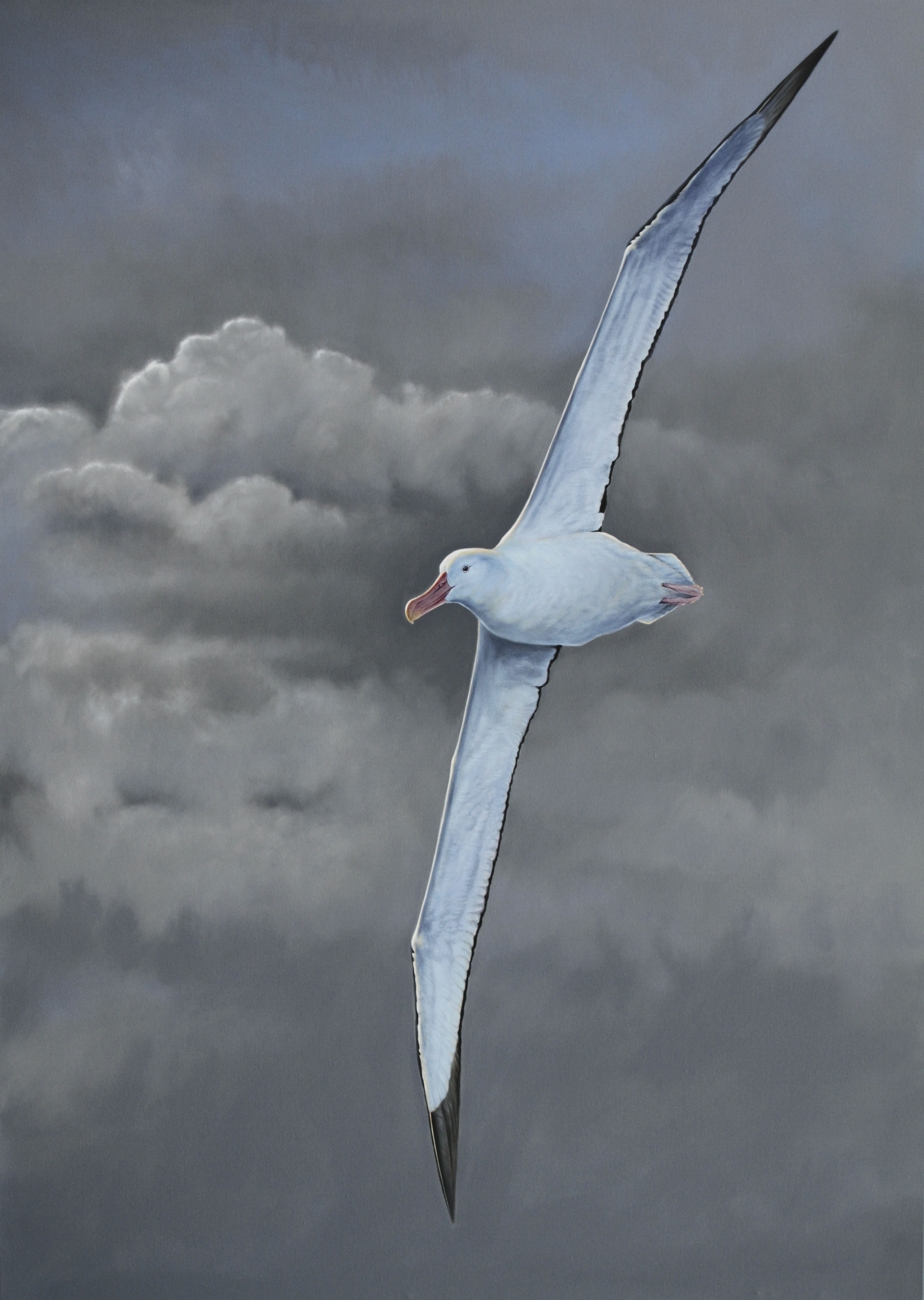
"Southern Ocean Wanderer" by Brett Jarrett
A.M. Heswall (School of Biological Sciences, The University of Auckland, New Zealand) and colleagues report in the journal Marine Biology on a study attempting to correlate seabird size with bycatch.
The paper’s abstract follows:
“Many animals have sensory biases towards signals or cues that typically provide some fitness benefit. Sensory traps occur when other species or anthropogenic sources produce similar signals or cues but responding is no longer adaptive and can impose significant costs or even death. Bycatch of seabirds by fishing boats has devastating impacts, causing hundreds of thousands of seabird deaths per annum. Here, we explore whether fishing vessels are acting as a sensory trap, inadvertently targeting seabirds with certain life-history traits or larger skeletal or sensory structures. We surveyed the literature to compare seabird order, diet, wingspan, body size, and nesting preference (surface or burrow) of 70 seabirds with varying numbers of reported bycatch in one of the world’s most important regions for seabird breeding, in northern Aotearoa New Zealand. We also examined the skeletal and sensory measurements of six seabirds that co-occur spatially in this region, but have different numbers of reported bycatch and indices of bycatch risk. The literature survey revealed that the Charadriiformes and the Sphenisciformes were the most vulnerable groups (p = 0.01), especially to surface longline fisheries. There were no correlations with diet and foraging behaviour, but surface nesting seabirds and those with larger bodies and wingspans were at a greater risk of becoming bycatch. Skeletal measurements show that species with higher bycatch also have relatively larger skulls, bills and wings, eye sockets and nostrils (relative to body size) (p < 0.05). This suggests that having a larger overall body size and longer protruding body parts is a primary risk factor, but that species with relatively more sensitive sensory systems likely have even more acute bycatch risk. Considering fishing vessels as sensory traps provides a context to explore the multiple interconnecting factors of sensory sensitivity, sensory bias, behaviour and morphology.”
With thanks to Janine Dunlop, Niven Librarian, FitzPatrick Institute, University of Cape Town.
Reference:
Heswall, A.M., Friesen, M.R., Brunton Martin, A.L. & Gaskett, A.C. 2021. Seabird bycatch risk correlates with body size, and relatively larger skulls, bills, wings and sensory structures. Marine Biology doi.org/10.1007/s00227-021-03873-4.
John Cooper, ACAP Information Officer, 11 May 2021

 Español
Español  English
English  Français
Français